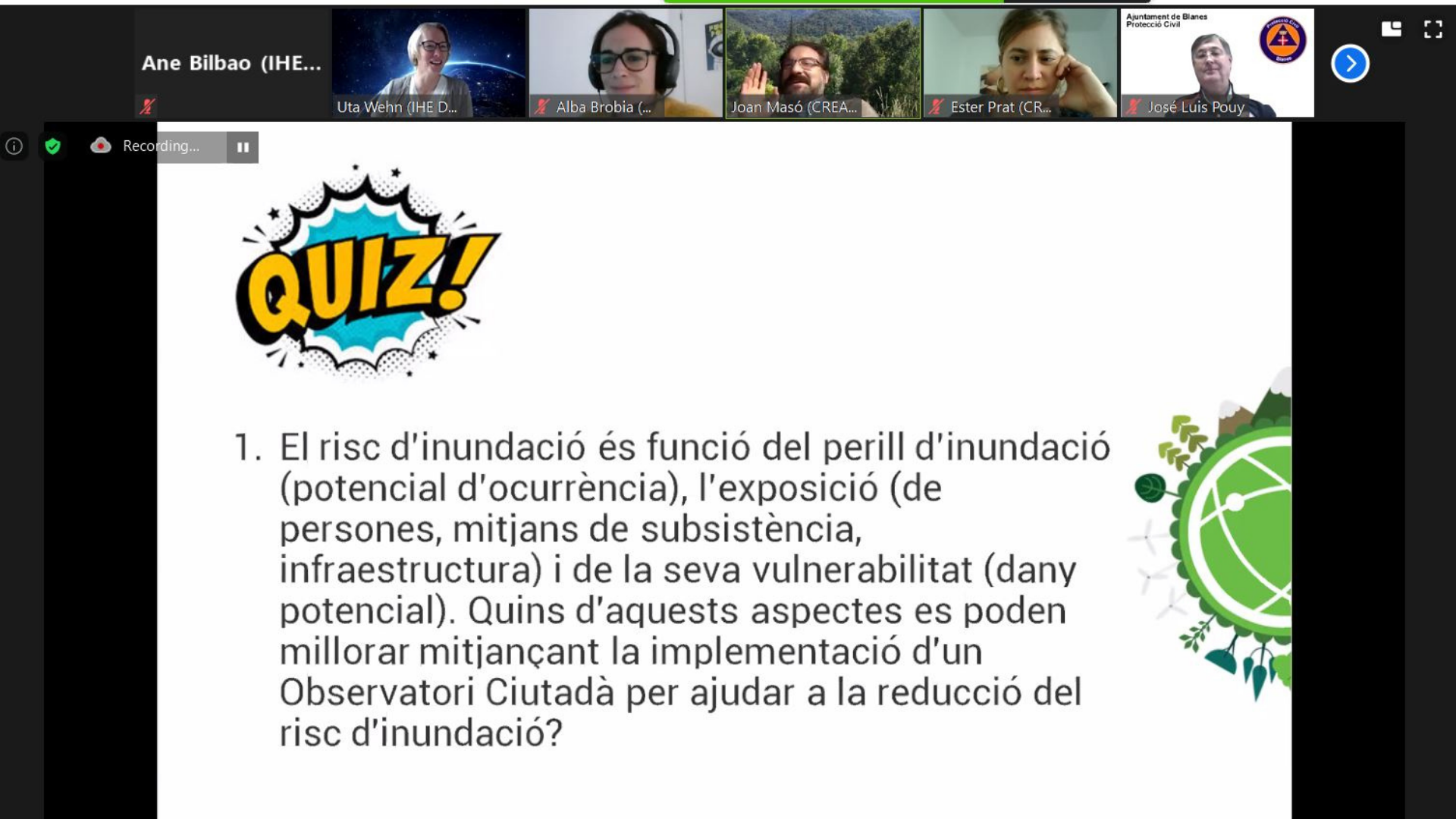

Roadshow event No. 2 (Barcelona)
16 October 2020
Date: 16 October 2020
Location: online event
Agenda:
10-10.10h. Welcome and introduction
10.10-10.40h. Setting the scene – the Tordera river & Storm Gloria
10.40-11.10h. Demonstration of a citizen observatory: overview of the citizen observatory of water (Alto Adriatico Water Authority)
11.10-11.55h. Group work
11.55h-12.45h. Plenary discussion on CO implementation: social and technological dimensions
12.45-13.00h. Recap and closing of the Roadshow event
During the Barcelona Roadshow event, the specific situation of the Tordera river during and after storm Gloria was considered to demonstrate the potential and practical implementation of a citizen observatory for flood risk management. In January 2020, storm Gloria had affected Eastern Spain badly with high winds and heavy rains. The storm caused coastal flooding and heavy damages in the Tordera river basin. It lasted 4-5 days and generated 19-23mm of precipitation which in many regions is half of what it rains in a year. According to civil protection workers, there was a lack of civil protection planning and this resulted in the situation being difficult to control. Infrastructure was affected such as roads, rail network high voltage towers, the desalination plant of the area, and campsites. During the Roadshow event, we discussed the potential of Citizen Observatories in the context of flood risk management and what elements come into play when implementing a Citizen Observatory. The 16 participants included regional policymakers and disaster managers.
In the Breakout Room entitled ‘ In what ways could a CO help you address your info needs during a flood?’, it was highlighted that a citizen observatory could have an amplifying effect in the community to alert and inform citizens with reliable and consolidated information, avoiding scattered sources. The power of social media channels could be used to spread information and reach more people. Citizen observatories were also perceived to play in planning, presenting a complementary source, while maintaining the role of the official administration. Finally, the Agència Catalana de l’Aigua (ACA) will launch a project called AGORA, to set up a citizen observatory that will inform participants about the main landmarks in a flood episode. In this way, people would be able to monitor specific spots and obtain real-time data. Regarding the question ‘What (else) would you like to get out of a citizen observatory (from a technological and/or social perspective)?, participants deemed it important to have information beyond actual protection plans. For example, early warnings, alert sensors (to anticipate effects by the hour), set up warnings downstream, automatic systems of sirens or lights to translate alerts into real alerts to whoever needs them. According to the current regulation, “The citizen has the right to be informed of the risk he has”. Citizen Observatories were seen to help raise awareness of floods in general and of vulnerable areas in particular, while also counterbalancing fake news. In the third Breakout Room, participants discussed challenging aspects of implementing a citizen observatory. The quality and the veracity of collected information were mentioned as main challenges. In some cases, the information may not be reliable or/and it could be fictitious. To prevent that, control systems were deemed necessary. The discussion also pointed to potentially low levels of participation and engagement, issues with use of technology and training participants, and awareness-raising as further challenging aspects. The consensus emerging during the plenary session was that thanks to the citizen observatories, it is possible to have improved access to people who can contribute to reducing risk and vulnerability.
Watch the video here.
